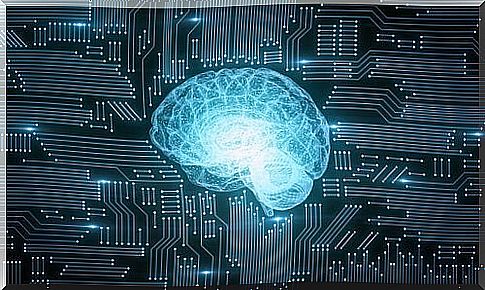What Exactly Is Connectionism?

In this article we explain what connectionism means. Understanding how the brain works is one of the biggest challenges in psychology. There are therefore different approaches and perspectives.
A revolution even took place after the rise of cognitive psychology and the Turing machine. From then on , researchers began to think of the brain as an information processor.
The computer metaphor represents the first theory created to explain the functioning of the brain. As people quickly realized how much the brain isn’t considering, they set out to look for new explanations and cognitive psychologists created a theory known as connectionism.
Before explaining connectionism, however, it is important to understand how mind computational theory views the brain. We will therefore discuss its main aspects below.
Cognitive Psychology and the Computation Theory of the Mind
Cognitive psychology views the human brain as an information processor. This means that it is a system capable of encoding, modifying and extracting new information from the environment. In addition, the system integrates this new data in a continuum of inputs and outputs.
The computational theory of the mind views the brain as a computer. Through a series of programmed algorithms, it transforms incoming information into a series of outgoing information.
The most pertinent flaws of this theory include the speed with which we process information, the flexibility with which we act, and the inaccuracy of our responses. If our brains had programmed algorithms, we would have different kinds of responses.
Our reactions would be slower, stiffer and much more precise than they actually are due to all the processing steps that have to be performed. In short, we would be like computers.
While we can try to adapt this theory to new evidence, the computational theory of mind still has shortcomings. This is where connectionism comes in. It is a much simpler theory than the previous one and explains the functioning of the brain a lot better.
What is connectionism?
Connectionism explains that information is processed through patterns of activation spread. But what are these patterns? In simpler terms , this means that when information enters our brains, neurons are activated, creating a specific pattern that produces a specific output.
This forms networks between neurons that will quickly process information without the need for pre-programmed algorithms. To understand this, let’s look at a simple example.
Imagine someone asks you to define the concept, the idea, of a dog. When the word reaches your ear, the array of neurons associated with it is automatically activated in your brain.
The activation of this group of neurons spreads to other neurons to which it is connected. This may include neural patterns related to the words mammal, bark, or fur. And this will lead you to define a dog as “a furry mammal that barks.”
Connectionism: properties of connectionist systems
According to this perspective, in order for these systems to work the way the human brain appears to behave, they must meet certain conditions. The basic properties that must be met include:
- Activation Spread. This means that neurons, when activated, affect the neurons they are connected to. This can be done by facilitating their activation or by blocking it. In the previous example, dog neurons facilitate the neurons related to mammals, but inhibit the neurons related to reptiles.
- Neural learning. The learning process and experience influence the connections between neurons. So if we see a lot of dogs that have fur, the connections between the neurons related to both concepts will be strengthened. In this way, we create the neural networks that help us process information.
- Parallel processing. Neurons do not activate one after the other. Activation takes place in parallel between all neurons. And there is no need to process one activation pattern after another. You can run multiple patterns at the same time. This allows us to interpret a lot of data simultaneously. However, our capacity has a limit.
- Neural networks. The system consists of a large network of neurons that are grouped together by mechanisms of inhibition and activation. Information networks and behavioral output can also be found within these networks. These groupings represent the structured information the brain possesses and the activation patterns indicate how it processes the information.
Conclusions
This way of interpreting neural functioning is not only very interesting, but research in the field also proves to be productive. There are many computer simulations of connectionist systems based on memory and language.
These simulations are very similar to human behavior. However, we still cannot say for sure that the brain works in this exact way. In addition, this model has also contributed in the field of computing and artificial intelligence.
Finally, it is important to understand that connectionism is much more complex than what we have explained in this article. If you’re curious, don’t hesitate to explore connectionism and its implications further.









